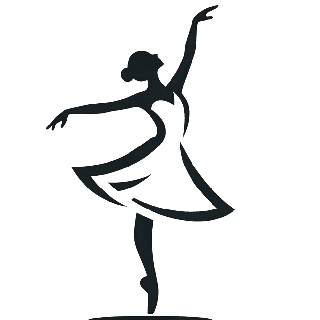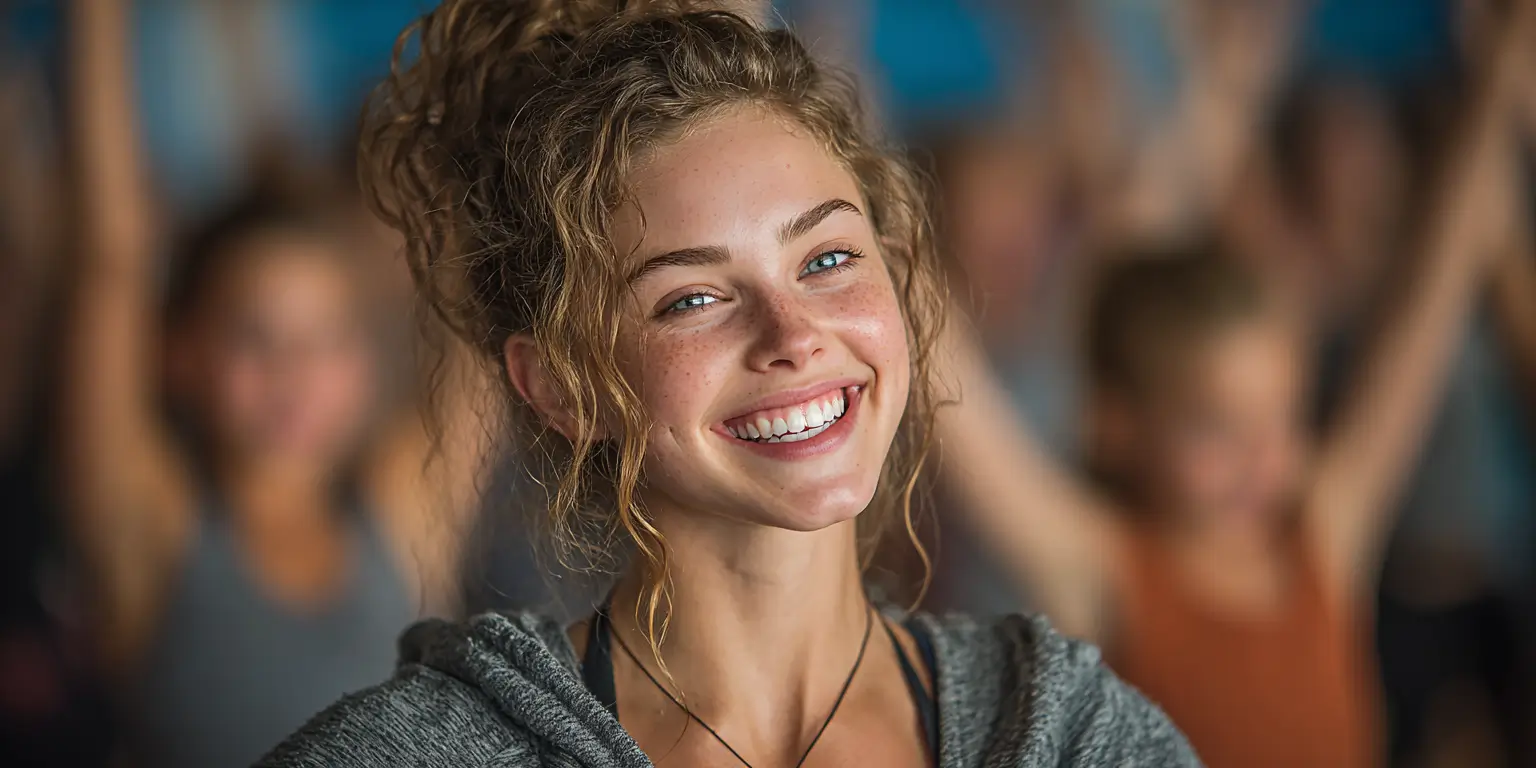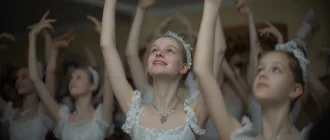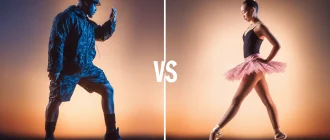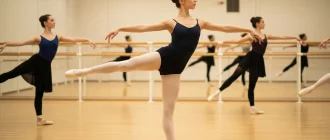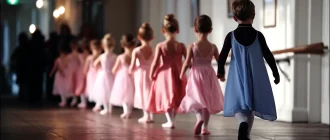Performance skills in dance elevate simple movements to memorable performances, enabling dancers to connect emotionally with the audience. Key dance skills, such as focus, projection, musicality, and expression, are essential in making a dance engaging and unique. This article will explore these skills, explain why they’re crucial, and provide guidance on how to hone them effectively.
Mastering performance skills in dance enhances stage presence and fosters personal growth, as well as valuable abilities that positively influence all areas of life.
Key Takeaways
- Dance performance skills are essential for transforming mechanical movements into expressive, engaging performances that connect emotionally with the audience.
- Key elements of performance skills include focus, projection, musicality, timing, expression, and emphasis, all of which significantly enhance the quality of dance performances.
- Continuous practice and integrating technology, such as video analysis and online tutorials, are crucial for improving dance performance skills and adaptability across different styles.
Performance Skills Podcast
Understanding Performance Skills in Dance
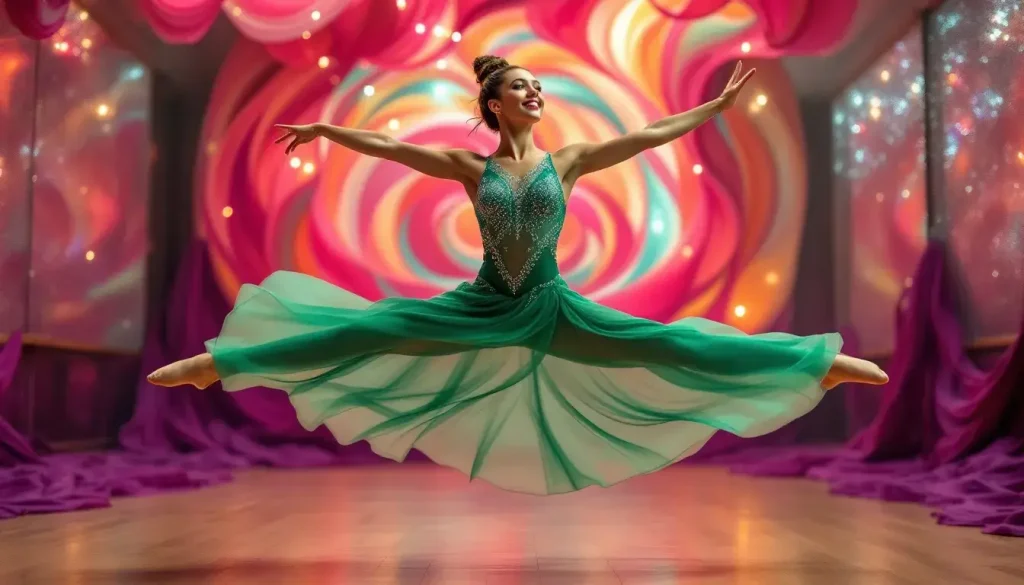
Performance skills are the essence of dance, transcending mechanical movements to create expressive, engaging performances that capture the audience’s attention. These skills enable dancers to connect emotionally with their viewers, making each performance a memorable experience. Understanding and harnessing performance skills elevates a dancer’s art, transforming movements into unique and compelling expressions.
A crucial aspect of performance skills is the interpretation of movements and the meaning behind the dance. This involves integrating dance combinations learned in class and executing them with a sense of purpose and emotion. Developing body awareness is essential for understanding and controlling movement, maintaining proper alignment, and improving balance, all of which contribute to more expressive and precise performances. Performance skills are not just about the technical execution of steps but about conveying a story or emotion through those steps. This ability to interpret and project movements makes a dancer stand out, transforming a routine into a powerful performance.
Moreover, performance skills help distinguish dance from mere physical activity. They bring originality and depth to the dancer’s expression, allowing for a richer, more nuanced portrayal of the choreography. Focusing on these skills and emphasizing genuine feelings in emotional expression enhances overall performance quality, helping dancers connect authentically with their audience and making the dancing truly remarkable.
Key Elements of Dance Performance Skills
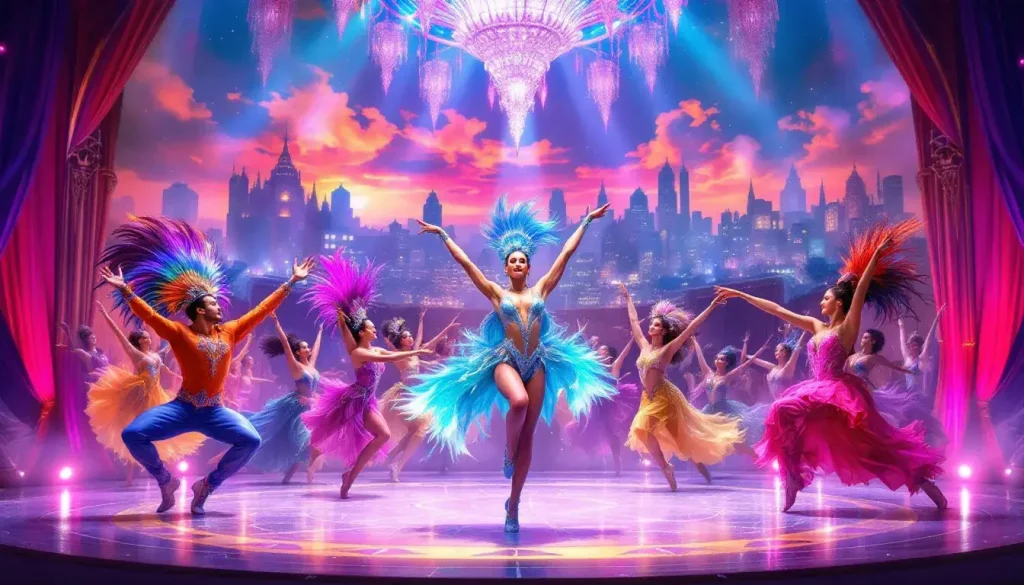
Mastering performance skills involves concentrating on several key elements that form the foundation of engaging and expressive dance. These elements include:
- Focus
- Projection
- Musicality
- Timing
- Expression
- Emphasis
Each of these components plays a vital role in enhancing a dancer’s ability to captivate and move their audience, highlighting the importance of their skills. For example, these important parts can significantly impact performance quality. Some examples include maintaining strong eye contact with the audience to demonstrate focus, using facial expressions to convey emotions, or projecting energy through expansive movements that involve various body parts.
Developing these ideas requires dedicated practice and an understanding of how they interrelate. For instance, musicality and timing enable dancers to interpret music creatively, while expression and emphasis bring out the emotional depth of a performance. Honing these skills improves overall performance quality and creates a more profound impact on the audience.
Focus and Projection
Focus and projection are critical for a dancer’s stage presence. A dancer’s ability to connect emotionally with the audience, often marked by communication skills, confidence, and expressive facial expressions, defines their stage presence. Effective projection ensures that every movement is visible and impactful, reaching even the most distant audience members.
This combination of focus and projection allows dancers to convey emotions and stories powerfully in this context, making their performances feel like an inspired, fun career challenge that is drawn out to be more engaging and memorable.
Musicality and Timing
Musicality and timing are crucial for synchronizing movements with music, resulting in a harmonious and expressive performance. These skills enable dancers to interpret music creatively, adding depth and emotion to their movements in the moment, enhancing the overall rhythm.
To achieve precise timing and musicality, it is essential to listen attentively to the music and your body, paying close attention to musical cues and physical sensations.
Focusing on musicality and timing enhances the ability to perform complex choreography with precision and fluidity, making the performance more compelling and enjoyable for the audience, as it is performed with greater skill.
Expression and Emphasis
Expression and emphasis are key to making a dance performance compelling and memorable. Emotional expression enhances various aspects of dance, such as level, space, and energy, making the performance more dynamic and engaging. Dancers often use the shape of their bodies to embody and express emotions, creating physical forms that reflect their feelings and emphasize their performance. Deliberate emphasis on specific movements can captivate the audience’s attention, creating heightened drama and impact.
Focusing on expression and emphasis enables dancers to convey emotions and stories more effectively through their movements, leaving a lasting impression on the audience.
| Performance Skill | What It Looks Like on Stage | Classroom Strategies to Build It |
|---|---|---|
| Alignment & Core Stability | Centered posture, clean lines, balanced turns & extensions | Pilates‐style mat work, barre placement drills, imagery cues (“zip the spine”) |
| Musicality & Timing | Phrasing that rides the music, clear accents, breathing with tempo shifts | Clap-and-mark exercises, dancing phrases with and without counts, rhythmic improvisation |
| Dynamic Range | Purposeful contrasts in speed, weight & energy (soft vs. sharp, sustained vs. percussive) | Laban’s effort explorations, “three qualities” phrase re-work, crescendo/decrescendo drills |
| Spatial Awareness | Even use of stage space, accurate patterns, and safe proximities in groups | Floor-plan mapping, “traffic-pattern” walk-throughs, mirror-and-shadow tasks |
| Expressive Intent / Artistry | Believable character, nuanced facial/gestural expression, emotional through-line | Storyboarding the choreography, motif‐development, improv, journaling, dancer intent |
| Performance Projection | Focused eye-line, confident épaulement, energy that reaches the back row | “Spot-the-audience” runs, camera-lens feedback sessions, breath-projection cues |
| Memory & Accuracy | Crisp recall of counts, formations, facings & details across runs | Chunking rehearsal, peer-teaching segments, silent “mental run-through” practice |
| Partnering & Weight Sharing | Smooth lifts, clear counterbalance, mutual timing & trust cues | Trust falls, contact improvisation basics, slow-motion lift breakdowns |
Building Performance Skills Through Practice
Building performance skills requires consistent practice and dedication. Key components include:
- Technical dance skills form the foundation for enhancing individual performance, allowing dancers to execute movements with precision and fluidity.
- Coordinating body movements with music and other dancers creates a seamless and captivating dance experience.
- Incorporating various practice methods, such as warm-up routines, improvisation exercises, and feedback sessions, can significantly improve dance and performance skills.
- Working with movement material in class, such as specific movement phrases or exercises, helps dancers build their movement vocabulary, develop muscle memory, and strengthen their overall performance skills.
Dance combinations are commonly used in a dance class to teach performance skills, integrating learning and execution in a practical setting. Additionally, digital tools provide dancers with immediate feedback, offering new insights and methods to refine their techniques. Leveraging these tools and methods enhances performance abilities and achieves a higher level of artistry.
Daily Warm-Up Routines
Effective warm-up routines prepare the body and mind for expressive dancing. Proper warm-up routines help condition dancers’ bodies, ensuring they are healthy, well-prepared, and less prone to injury during practice and performance. These routines typically last around 15 minutes and include stretching to prevent injuries. A structured sequence of warm-up activities tailored to the specific dance style ensures that dancers are physically ready for practice.
Including facial warm-up exercises is also crucial, as the facial muscles contribute significantly to expressiveness in dance. Practicing with a metronome can help dancers develop a reliable sense of timing, aligning their movements accurately with the music.
Improvisation Exercises
Improvisation exercises are a powerful tool for developing performance skills. Activities like the Musical Improv, where dancers start by lying still and then move as if they were the music, enable a spontaneous flow of creativity. These exercises also help dancers isolate and control specific body parts, such as shoulders, hips, and neck, allowing for more expressive and intentional movement. Games like ‘Emotion Check-In’ help dancers connect with their emotions and express them through movements.
The Character Cards activity encourages dancers to portray different narratives, enhancing their ability to embody nuanced performance qualities. Using a diverse music playlist during improvisation helps dancers explore various attributes in their movement, fostering creativity and emotional expression.
Feedback and Self-Reflection
Feedback and self-reflection are crucial for improving performance skills. Engaging in peer evaluations among students enables dancers to gain diverse perspectives and insights, thereby enhancing their performance and overall artistic development. Recording dance performances allows dancers to assess their technique and critically identify specific areas for improvement.
Video analysis provides visual feedback that highlights subtle gestures and alignment issues, leading to refined techniques. Utilizing motion tracking technologies enables dancers to pinpoint specific movement discrepancies, thereby accelerating skill development and enhancing overall performance quality.
Enhancing Stage Presence
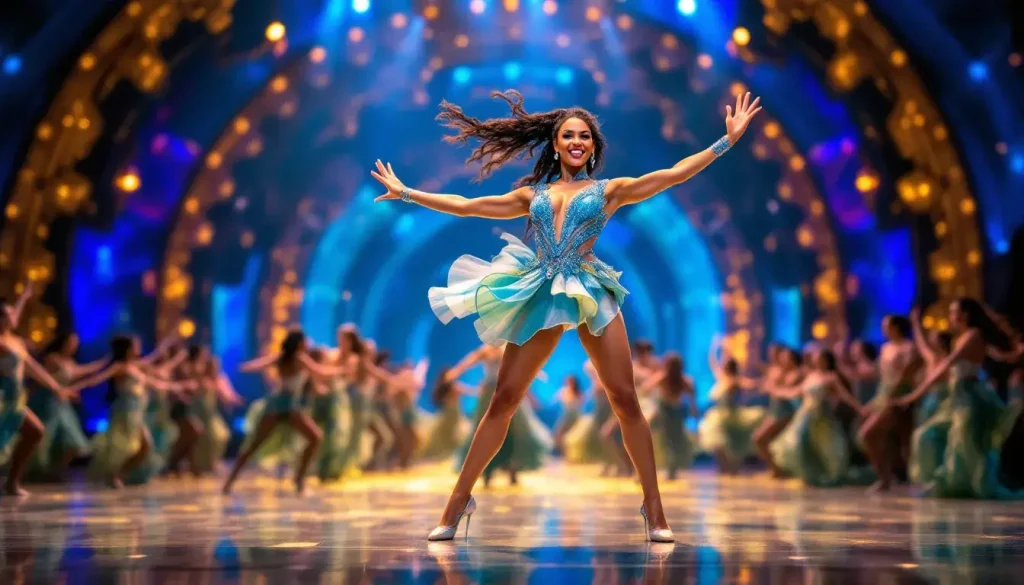
Stage presence is a vital aspect of dance performance that captivates and engages the audience. To improve stage presence, dancers should focus on:
- Projecting their movements to reach even the farthest audience members, enhancing visibility.
- Using projection to allow for emotional expression that resonates with the audience.
- Developing strong improvisational abilities, particularly in jazz and hip-hop, is essential for connecting with the audience and establishing a commanding stage presence.
Engaging the audience through effective projection and improvisation is a key strategy for developing stage presence. Creating different shapes with the body can also enhance stage presence and storytelling, as these shapes help convey emotions and add depth to the performance. By honing these skills, dancers can create dynamic, interactive, and unforgettable performances. Emphasizing these elements in practice and performance can significantly enhance dancers’ ability to captivate their audience and convey their artistic vision.
Character Development
Character development is essential for creating meaningful and engaging dance performances. Dancers are encouraged to develop characters or stories to justify their movements with purpose. Acting skills are necessary for effectively embodying characters, as they enable the conveyance of emotions and narratives to the audience.
Fully embodying characters through movement, facial expressions, and emotional nuance enhances the performance’s emotional impact and memorability. Additionally, improvisation exercises can help dancers effectively explore a range of emotional responses and character portrayals, thereby deepening their understanding of the material.
Audience Engagement
Engaging the audience is a crucial aspect of a successful dance performance. Techniques to enhance audience engagement include:
- Maintaining eye contact
- Utilizing the stage space effectively
- Storytelling
- Creating an emotional connection
Developing communication skills through expressive movement and body language further enhances audience engagement by allowing performers to convey emotions and narratives more effectively.
These methods help make the performance more impactful.
Focusing on audience impact and adjusting movements to encompass the entire stage area creates a focused, interested, and engaging experience for viewers.
The Role of Dance Teachers in Developing Performance Skills

Dance teachers play a crucial role in developing performance skills by:
- Utilizing various teaching methods to enhance student skill acquisition and foster a positive self-image.
- Creating a supportive environment in dance classes to optimize student concentration and promote mutual respect.
- Feedback and guidance help students improve their performance skills and gain confidence, which is essential for effective teaching practices.
Creating an encouraging atmosphere and offering personalized coaching helps students overcome specific performance challenges and enhance their skills. Personalized feedback enables dancers to identify their strengths and weaknesses, facilitating targeted improvements and a deeper understanding of their craft. This approach promotes skill development and fosters a love for dance, as well as a sense of accomplishment, in students.
Creating a Supportive Environment
Creating a support environment in dance classes at the dance studio is crucial for student success. Establishing an encouraging atmosphere enhances student concentration and fosters mutual respect. Participating in virtual workshops can also foster a sense of community among dancers, offering opportunities for collaboration and feedback from peers and instructors.
This collaborative and encouraging atmosphere is essential for nurturing performance skills and helping students reach their full potential as a school group.
Personalized Coaching
Personalized coaching provides dancers with tailored guidance that caters to their unique needs and performance styles. By addressing specific performance challenges through individualized coaching, dancers can enhance their skills and confidence.
Providing personalized feedback allows dancers to understand their strengths and weaknesses during performances, promoting improvement and fostering a deeper understanding of their craft. This approach significantly benefits dancers, enabling them to achieve higher levels of artistry and performance quality.
Integrating Performance Skills Across Different Dance Styles
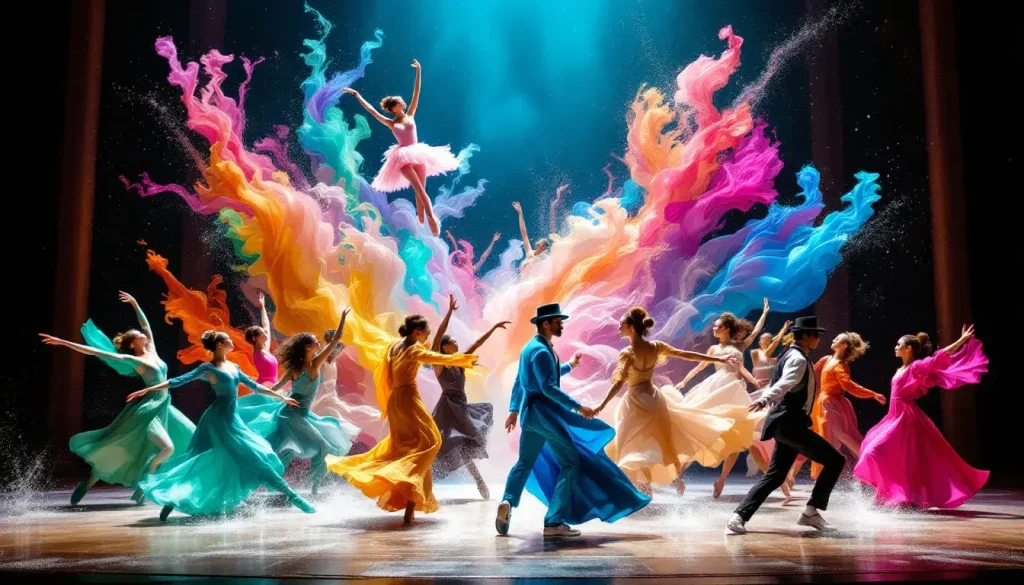
Integrating performance skills across different dance styles enhances dancers’ versatility and adaptability. Each dance genre, from ballet to hip-hop, necessitates specific performance techniques tailored to its unique demands. Mastering various styles broadens a dancer’s skill set and prepares them for diverse performance contexts and audiences.
This versatility improves their overall performance quality and opens up more opportunities in their dance careers. Developing these skills is essential for anyone aspiring to become a professional dancer, as it demonstrates the ability to meet professional standards and adapt to the varied demands of the industry.
Jazz dance, for instance, requires adaptability and a range of techniques to convey dynamic movements, while hip-hop emphasizes freestyle and personal style. Switching between these styles and integrating their performance skills allows dancers to create more engaging and expressive performances. This adaptability is a valuable asset in the ever-evolving world of dance.
Ballet and Contemporary Dance
Ballet and contemporary dance each require unique performance skills. Ballet is known for its structured and precise movements, emphasizing technique and adherence to traditional forms. Conversely, modern dance is characterized by its versatility and focus on emotional expression and fluidity.
By mastering the performance skills specific to these styles, dancers can enhance their ability to convey emotions and create compelling performances. This fusion of precision and expression allows for a richer, more nuanced portrayal of choreography.
Jazz and Hip-Hop
Jazz and hip-hop are characterized by their high energy, expressive movements, and improvisational nature. Dancers in these styles must master performance skills that elevate their artistry, such as strong musicality, captivating focus, and pronounced emotional conveyance through movement.
Techniques like body isolation, syncopation, and improvisation are essential for engaging audiences and creating interactive, energetic performances. Honing these performance skills enables dancers to connect deeply with the music and their audience, making every performance memorable.
Using Technology to Improve Performance Skills
Technology has become essential for dancers looking to enhance their performance skills and gain new insights. Video recordings enable dancers to analyze their performances, identify areas for improvement, and track progress over time. Accessing online tutorials and workshops expands a dancer’s training options, providing new techniques and perspectives on performance. Embracing digital tools refines performance skills and empowers dancers to take control of their learning and development.
These technological advancements provide dancers with unparalleled opportunities to enhance their skills. From video analysis that provides visual feedback to online platforms offering a variety of instructional materials, dancers can now access resources that were previously unavailable to them. The integration of technology into dance education is revolutionizing how dancers practice and perform, enabling them to achieve excellence in their craft more easily.
Video Analysis
Video analysis is a powerful tool for dancers to refine their performance skills. Reviewing video recordings allows dancers to objectively assess their technique, focus, and expressiveness, leading to more effective practice sessions.
Self-assessment through video allows dancers to set specific goals for improvement and track their progress over time. Insights derived from video analysis should be integrated into practice routines, helping dancers to address identified weaknesses and enhance their overall performance.
Online Tutorials and Workshops
Online platforms provide access to a range of tutorials and workshops tailored to various dance styles and skill levels. These resources enable dancers to learn at their own pace and explore other styles or techniques that might not be available locally in the course of their training.
Online dance tutorials provide access to a diverse range of teaching styles and techniques, allowing dancers to find resources that cater to their individual learning preferences. This flexibility and variety of learning opportunities available on digital platforms are transforming dance education, making it more accessible and comprehensive.
Resume
Mastering performance skills in dance is a journey that involves understanding key elements, consistent practice, a job in dance, and leveraging technology. From focus and projection to musicality and expression, these skills transform mechanical movements into captivating performances that resonate with audiences. Building performance skills through daily routines, improvisation, and feedback, while enhancing stage presence and integrating different dance styles, prepares dancers for diverse performance contexts. With the guidance of dedicated dance teachers and digital tools, dancers can continuously refine their craft, achieving excellence and leaving a lasting impact on their audience.
